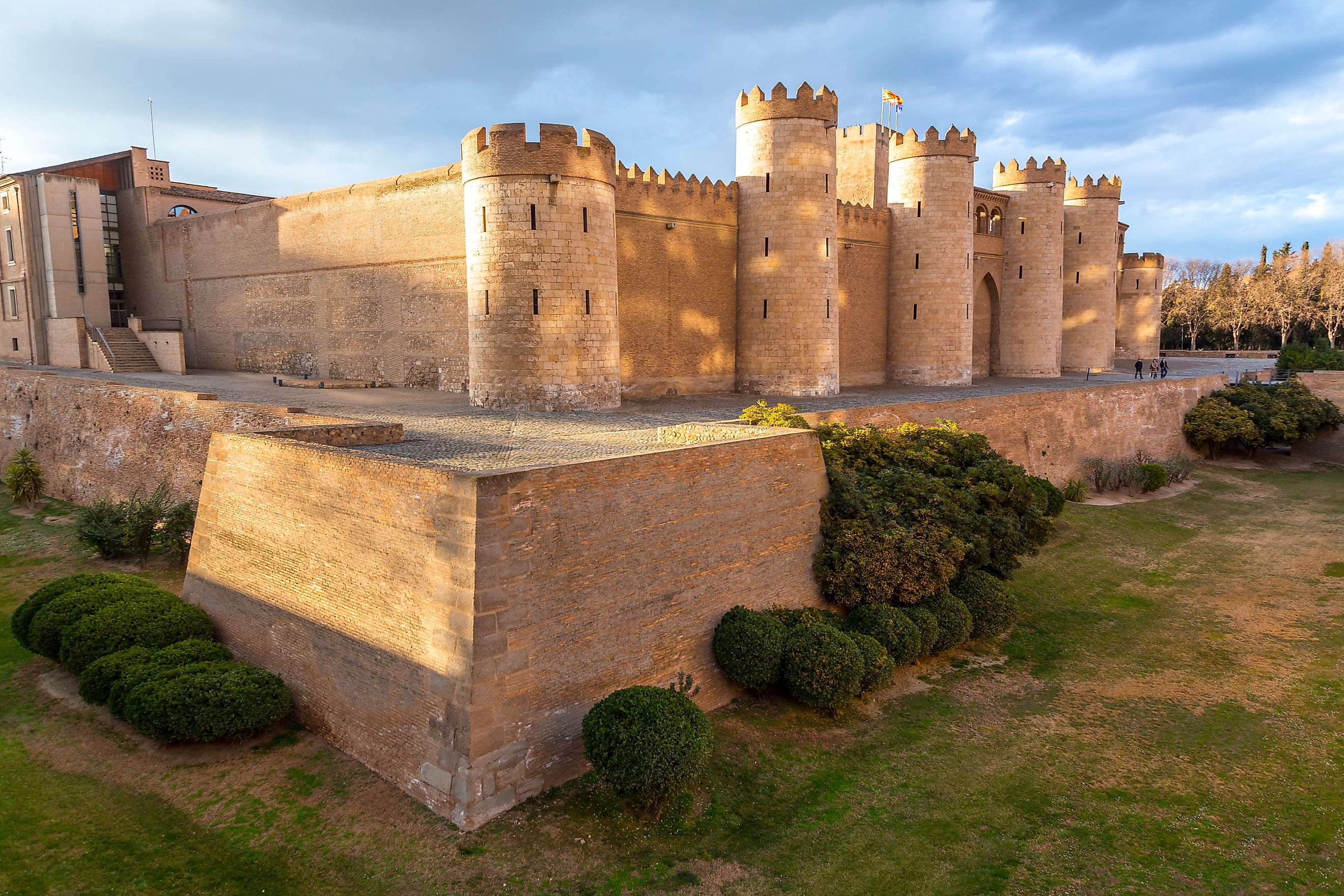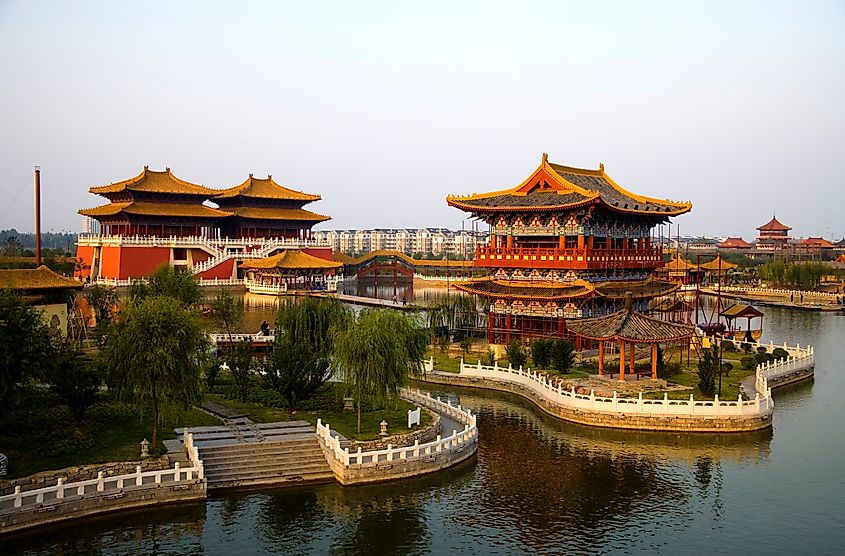
The 10 Largest Cities of the Medieval World
The Medieval Era is largely agreed to have occurred across the 1000 years between the fall of the Roman Empire in 476 AD and the collapse of the Byzantine Empire in 1453 AD. From a European perspective, this era was largely characterized by a sharp decline in wealth, trade, and desolate cities and urban areas.
However, the opposite was true for much of the outside world. The Middle East was enjoying the fruits of the Islamic Golden Age, China was as strong as ever, and India was an economic powerhouse. Much of this cultural and economic advancement could be found in various cities worldwide. Some of which grew to enormous sizes for the time.
10 Largest Cities In The Medieval World (1000 AD - 1250 AD)
| Rank | City | Estimated Population |
|---|---|---|
| 1 | Kaifeng | 700,000 |
| 2 | Angkor | 650,000 |
| 3 | Gangaikonda Cholapuram | 300,000 |
| 4 | Kyoto | 300,000 |
| 5 | Cairo | 300,000 |
| 6 | Thanjavur | 250,000 |
| 7 | Constantinople | 250,000 |
| 8 | Baghdad | 250,000 |
| 9 | Nishapur | 250,000 |
| 10 | Cordoba | 110,000 |
Kaifeng - China (700,000)

Kaifeng was both a political and economic hub in China for centuries. It first rose to prominence in the 4th century BC when it was made the capital city of the Wei state. During the rule of the Song Dynasty, it was once again made capital.
Kaifeng was a surprisingly diverse city. It had ethnic and religious enclaves from across most of Asia. Famously there was a sizeable community of Chinese Jews living within the city. It is thought they first arrived in Kaifeng sometime in the early 12th century either from Persia or India. The city was transformed into an economic center for the Song Dynasty and attracted hundreds of thousands of people to live and work within the city. It is argued that the population of the city could have reached close to 1 million people sometime in the 12th century.
Angkor - Cambodia (650,000)

The city known as Angkor was the heart of the Khmer Empire for nearly 600 years. Today, it is world-renowned for being home to Angkor Wat, an enormous temple complex completed in the 12th century under the rule of King Suryavarman II. The Khmer Empire was made rich by controlling trade routes between India and China and other vital routes into Indonesia. At its peak, Angkor is thought to have housed around 650,000 people.
The city of Angkor met a mysterious end. By the 16th century, it, along with its vast temple complex, was completely abandoned. It is still not fully understood what happened to Angkor; however, leading theories suggest it suffered from a handful of natural disasters that caused its vast population to disperse into the nearby countryside.
Gangaikonda Cholapuram - India (300,000)

Gangaikonda Cholapuram was the capital city of the powerful Chola Dynasty that ruled large sections of Southern India and Sri Lanka between the 10th and 13th centuries. The city was first built on the orders of the Chola ruler Rajendra I, after a great victory over the rival Pala Dynasty. The ancient city is famous for its towering royal palace and various temple complexes. The Chola rulers were well known for commissioning various public works of art, many of which can still be seen in the ruins of the old city.
At its peak, the population of Gangaikonda Cholapuram swelled to around 300,000 people. The city entered a state of decline after the Chola Dynasty ended after internal unrest brought the empire down in 1279 AD.
Kyoto - Japan (300,000)

Kyoto served as the capital of Japan for centuries. Since 794 AD, Kyoto acted as the seat for Japan's various political rulers. Both emperors and shoguns controlled Japan from Kyoto and poured endless amounts of money into infrastructure and cultural monuments. Despite being deep inland, Kyoto was still able to amass wealth thanks to trade with other coastal cities within Japan itself. The large central government also drew in plenty of people from around the countryside to work in markets, inns, and other outlets for Japanese nobles.
The city continued to thrive for most of the Medieval Era until it was completely devastated during the 1500s after Japan fell into a period of brutal civil wars. In the centuries following it slowly regained its footing but was eventually surpassed by Edo, now Tokyo in the 19th century.
Cairo - Egypt (300,000)

Cairo, the capital city of modern-day Egypt, was one of the richest and most important cities of the Medieval period. The city was first founded as a military encampment during the Islamic conquest in the 7th century. The city was famously the seat of power for the Ayyubid dynasty, which was founded by the legendary general Saladin. Saladin was a critical leader during the 2nd and 3rd Crusades which took place in the 12th century.
Cairo's position along the Nile River gave it easy access to the Mediterranean Sea and the numerous kingdoms and empires to trade with. It did not take long for the city to grow exceptionally and become the largest city in the Muslim world by 1250 AD.
Thanjavur - India (250,000)

Thanjavur was the first capital city of the Chola Dynasty. Located just south of Gangaikonda Cholapuram, both cities share many similarities. The growth of Tanjavur was somewhat more organic as it was not commissioned as the result of a great military victory. Thanjavur, like its sister city Gangaikonda Cholapuram, is celebrated for its abundance of religious buildings and is home to various temple complexes. At its height, Thanjavur was home to around 250,000 people.
The city started to go into decline after the new capital, Gangaikonda Cholapuram, was built, but it managed to stay relevant even after the collapse of the Chola Empire. The Vijayanagar, Maratha, and even the British all viewed Thanjavur with a degree of importance.
Constantinople - Turkey (250,000)

Now known as Istanbul, Constantinople was the capital of the Byzantine Empire (Eastern Roman Empire) throughout the Middle Ages. Since the collapse of Rome in 476 AD, Constantinople carried on the legacy and grandeur of the Roman Empire. The city was established at a near-perfect geographical location. Not only was it at the city positioned so that it was located at the crossroads between Europe and Asia, but it was positioned at the end of a long peninsula, making it almost impossible to capture.
Constantinople famously fell to the Ottomans in 1456 AD after centuries of decline. It is widely agreed by historians that the city was doomed to fail after it was sacked during the Fourth Crusade in 1204 AD. Even though the Romans were able to take back the city, it never returned to its previous glory.
Baghdad - Iraq (250,000)

Baghdad was the crown jewel of the Muslim world for hundreds of years. Many of the breakthroughs and achievements made during the Islamic Golden Age were done so in the libraries and universities within Baghdad.Baghdad's central position made it an ideal place for a capital city. Various Muslim caliphates used Baghdad as a political capital to rule their vast empire. The city also acted as one of the key stops along the lucrative Silk Road trade route that ran from Europe to China.
While Baghdad did start to decline a bit under certain rulers, the city was famously destroyed by the Mongols in 1258 AD. The sacking of Baghdad was so thorough and so vicious that the city did not recover for centuries later.
Nishapur - Iran (250,000)

Nishapur was first found in the 3rd century under the rule of the Sassanid Empire. Under Islamic rule from the 7th century onwards, the city flourished as a commercial hub in the region and as another crucial city that sat along the Silk Road. Nishapur was famous for its production of high-quality silk, cotton, and other textiles. These items were highly valued and were traded throughout the region bringing back large amounts of wealth into the city.
Nishapur met a similar fate to Baghdad as it too was sacked by the Mongols and also suffered from a series of earthquakes. The once bustling city was reduced to a ruin with much of its population fleeing or being killed.
Cordoba - Spain (110,000)

Cordoba was the beating heart of the various Islamic Caliphates that ruled over much of modern-day Spain during the Middle Ages. In the 8th century, the original city was essentially destroyed during the Muslim invasion but was slowly rebuilt over the years. By the middle of the 10th century, Cordoba was the largest city in Europe and possibly the most metropolitan next to Constantinople. Under Umayyad rule, the city grew to house a population of over 100,000 people.
In 1236, Christian forces recaptured the city, which remained a key position in the ongoing military campaign against the Muslim kingdoms. However, its repurposing as a military outpost drew away from the cultural life that the city was once known for. By the time the Reconquista was finished in 1492, Cordoba had shrunk considerably.
Despite the Middle Ages being sometimes portrayed as a time of great recession and backwardness, there were still plenty of places and cities that were not only surviving but thriving as well.











